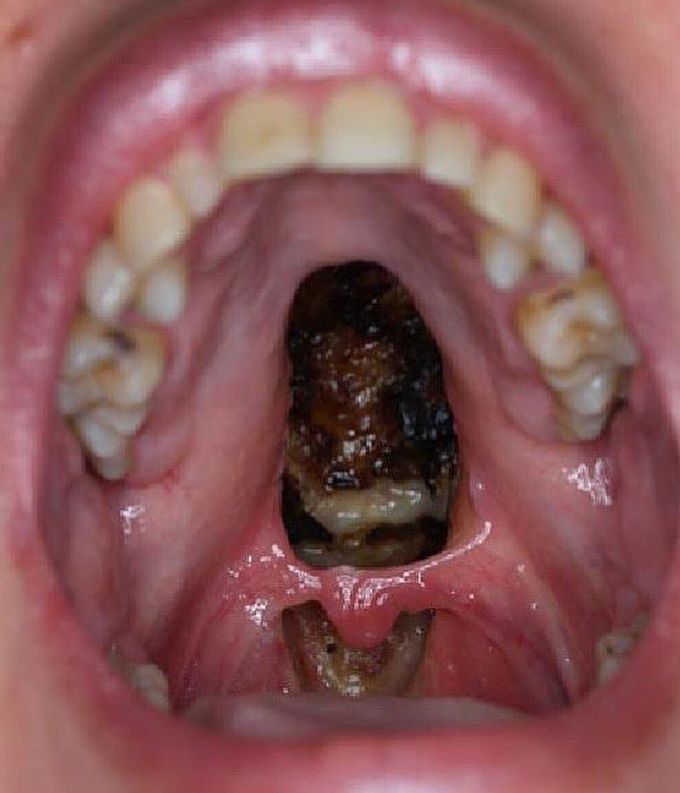


Palatal perforation with nasopharyngeal infection due to excessive cocaine use!
Cocaine abuse has increased in the past decade, with a rise in the reported cases of midpalatine perforations produced as a result. The vasoconstrictive and caustic effect of the drug can produce direct irritation and ischemia of the nasal and palatine mucosa, leading over the long term to the creation of an oronasal perforation secondary to maxillary bone destruction. The most important tissue effect is vasoconstriction. Ischemic necrosis and irritation are produced as a result of both the drug itself and of the adulterants commonly found in its composition. This, and the traumatic effect of the crystals inhaled at high speed, favor the appearance of recurrent nasal infections. The treatment options comprise sealing of the defect, either surgically or with a removable obturator, once the lesion has been seen to remain stable. Such management also implies patient rehabilitation as regards to cocaine abuse. The surgical technique is chosen according to the location and dimension of the lesion, the daily dose and duration of cocaine addiction and the presence of infection among other factors. Credit: Jativa Silvestre, Clinical Oral Investigations

